It’s school holidays once again and while that means little to (happily) kid-free people like me, it does have the added bonus of an abundance of new movies to watch at the cinema. And while most people my age (27, if you were at all wondering) would choose to see Jurassic Park or the Entourage Movie, the flick I’m most keen to see is the newest animated masterpiece from Pixar, Inside Out.
After putting out a bunch of sequels the last couple of years (think Cars 2 and Monsters University) the reviews for Inside Out are proclaiming a return to form for Pixar; some are even calling it one of the best films of 2015. But aside from a personal and professional adoration for the genre of animation, my main reason for wanting to see Inside Out is it’s topic: Emotions. Without spoiling the plot for you (or myself) Inside Out ventures inside the mind of an 11-year-old girl (Riley) and the emotions that guide her through the tumultuous experience of moving. Like all of us, Riley is guided by her emotions – Joy, Anger, Disgust, Fear and Sadness – who live inside her mind and help her navigate her life in a new city, house and school.
Emotion is a very interesting topic, and particularly relevant in the field of graphic design, where creating an emotional connection to an audience is imperative to successfully communicate your message or meaning. While you don’t want your audience to just act on emotion (understanding and acquiring knowledge is important too!), it often precedes cognition and is therefore vitally important to attracting an audience’s attention. And let’s face it, in today’s media-saturated society that’s a big battle. So what’s the easiest way to emotionally hook your audience through graphic design in Sydney? Cute baby animals. Seriously. Okay, not just cute baby animals, but they are one of the 6 top emotionally responsive images you can use in your designs and publications to assist in provoking an emotional response in your audience that I’ll outline below.
1. Happy Smiles.
Happiness breeds happiness: if you see someone smiling you’re more likely to smile too. Using these types of images in your publication design can also inspire the pursuit of happiness, bringing the audience to question why that person is so happy and how they can be that happy too.
2. Portraits.
Portraits work to evoke an emotional response because they are true emotion, captured from real life moments, preserved forever on film. Portraits are great to use online or in print publications.
3. Babies.
Who can resist a cute button nose or those tiny little fingers? When appropriate, using an image of a baby in your publication design or advertising is a great way of engaging and maintaining the attention of a wide audience.
4. Animals.
Psychologists can’t put their finger on exactly why our emotional response to babies is so strong that it carries over to the animal kingdom, but the draw of a cute animal picture is undeniable. Can you work a dog or kitten into your next online publication or ad?
5. Nostalgia.
Sentimentality to the past can evoke memories in an audience of happy personal associations. Using these types of images in publication design or advertising can bring about recollections and create associations between your brand and your audience.
6. Inspiring Feats.
Images showing inspiring acts or feats of human achievement can have a powerful psychological impact on your audience. Use these images in your advertising or branding publications to spur your audience into action, by allowing them to envision themselves in the role you’re depicting.
Don’t just go putting an image of a smiling baby otter mountain climbing in your next design project though! There’s an art to selecting the right image for your publication. Give us a call or drop us an email to talk about how Fresco can help your brand create an emotional response with your audience in your next publication or advertising project.
